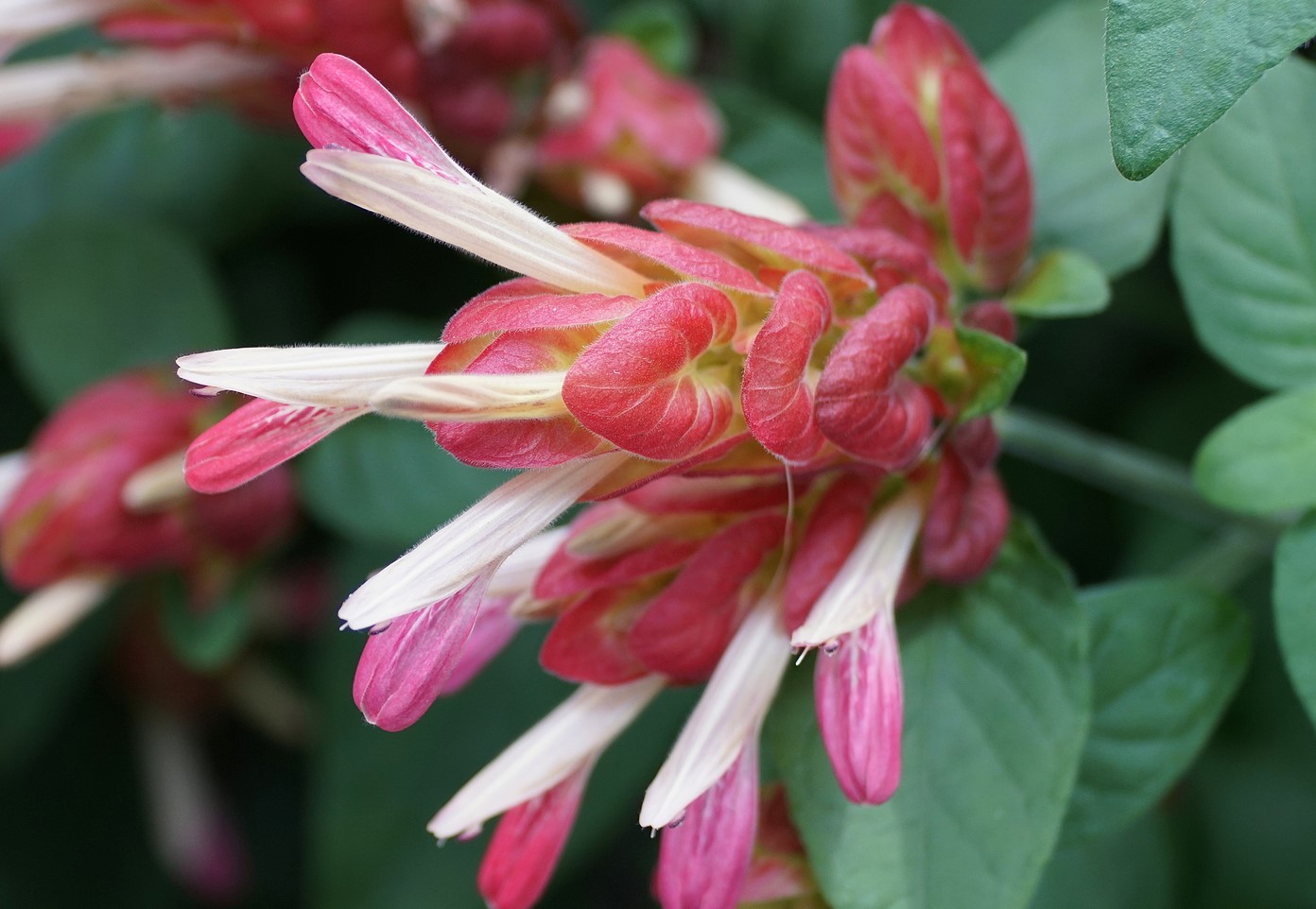
Justicia, also known as the shrimp plant or the Mexican shrimp plant, is a fascinating species that belongs to the Acanthaceae family. This unique and vibrant plant displays eye-catching flowers that resemble small shrimps, hence its common name. While Justicia is primarily grown for its ornamental value, it also has several intriguing traits that make it a favorite among plant enthusiasts.
In this article, we will delve into 10 mind-blowing facts about Justicia that will spark your curiosity and deepen your appreciation for this extraordinary plant. From its origin and symbolism to its medicinal uses and care tips, you’ll discover a wealth of information that sheds light on the wonders of Justicia.
Key Takeaways:
- Justicia is a diverse and low-maintenance genus of flowering plants, offering stunning blooms in a wide range of colors. It attracts pollinators, has medicinal properties, and cultural significance.
- Justicia is not just a pretty plant; it’s also a source of natural dyes and has culinary uses. It symbolizes peace and tranquility, making it a valuable addition to any garden or landscape.
Justicia is a diverse genus of flowering plants
Justicia is a genus of plants that belongs to the family Acanthaceae. There are around 600 known species of Justicia, making it a diverse and fascinating group of flowering plants. From vibrant tropical blooms to delicate wildflowers, Justicia species can be found in various habitats across the globe.
Justicia blooms in a wide range of colors
The flowers of Justicia come in a stunning array of colors, ranging from bold and vibrant to soft and pastel hues. Whether it’s the fiery red of Justicia brandegeana or the delicate purple of Justicia carnea, these plants offer a visual feast for the eyes.
Justicia has medicinal properties
Several species of Justicia have been traditionally used for their medicinal properties. Justicia gendarussa, for example, has been studied for its potential as a natural remedy for various ailments, including inflammation and microbial infections. The leaves, stems, and roots of certain Justicia species are often used in traditional medicine practices.
Justicia attracts pollinators
Justicia flowers are known for their ability to attract pollinators, such as bees, butterflies, and hummingbirds. The vibrant colors and sweet nectar of Justicia blooms serve as a magnet for these important creatures, promoting biodiversity and aiding in the process of plant reproduction.
Justicia is low-maintenance
If you’re looking for a plant that requires minimal fuss, Justicia might be the perfect choice. Many species of Justicia are well-suited to various climates and are relatively low-maintenance. They can thrive in both indoor and outdoor settings, making them a versatile option for gardening enthusiasts.
Justicia is used in landscaping
With its stunning blooms and easy-care nature, Justicia is often used in landscaping projects to add color and beauty to gardens, parks, and public spaces. Its ability to attract pollinators also makes it a valuable addition to any eco-friendly landscape design.
Justicia is a symbol of peace and tranquility
In many cultures, Justicia is associated with peace and tranquility. The peaceful ambiance created by blooming Justicia flowers is said to promote a sense of calm and serenity. Some people even use Justicia blooms as decorations during meditation and relaxation practices.
Justicia is a source of natural dyes
The vibrant blooms of certain Justicia species can be used to extract natural dyes. The petals and leaves contain pigments that can be used to create a range of colors, providing an eco-friendly alternative to synthetic dyes.
Justicia has culinary uses
In some cultures, Justicia leaves are used as a culinary ingredient. They can be added to salads, cooked as a vegetable, or brewed into herbal teas. Justicia leaves are known for their unique flavor profile, adding a touch of freshness and zest to various dishes.
Justicia has cultural significance
Justicia holds cultural significance in many parts of the world. It has been featured in traditional art forms, literature, and folklore, symbolizing beauty, resilience, and the wonders of nature. Justicia’s presence in cultural narratives highlights its enduring appeal and significance in human history.
Conclusion
In conclusion, Justicia is a fascinating plant that offers numerous benefits and mind-blowing facts. From its vibrant blooms to its therapeutic properties, Justicia is truly a remarkable addition to any garden or plant collection. Whether you’re seeking a natural remedy or simply want to enhance the aesthetic appeal of your space, Justicia has something to offer. Its ability to attract butterflies and hummingbirds adds an enchanting touch to any outdoor area.Furthermore, Justicia’s resilience and adaptability make it an excellent choice for both novice and experienced gardeners. With its low maintenance requirements and ability to thrive in various climates, Justicia is a versatile plant that can be enjoyed by all.So why wait? Explore the world of Justicia and discover the wonders that this plant has to offer. Whether it’s its unique growth patterns or its cultural significance, Justicia is sure to leave you awestruck.
FAQs
Q: How often should I water my Justicia plant?
A: Justicia plants require regular watering, especially during hot and dry periods. It is best to monitor the moisture levels in the soil and water your Justicia plant whenever the top inch of soil feels dry to the touch.
Q: Can I grow Justicia indoors?
A: Yes, Justicia can be grown indoors as long as it receives sufficient sunlight. Place your Justicia plant near a bright window or provide artificial light if necessary. Ensure proper drainage and water the plant as needed.
Q: Are Justicia plants prone to any pests or diseases?
A: Justicia plants are relatively resistant to pests and diseases. However, they may occasionally attract spider mites or aphids. Regularly inspect your plants for any signs of infestation and treat them with organic pest control methods if necessary.
Q: How tall do Justicia plants typically grow?
A: The height of Justicia plants can vary depending on the species and growing conditions. On average, they can grow anywhere from 2 to 6 feet tall.
Q: Can I propagate Justicia plants from cuttings?
A: Yes, Justicia plants can be propagated from stem cuttings. Take healthy cuttings and place them in a well-draining potting mix. Keep the soil moist and provide warmth and indirect sunlight for successful rooting.
Justicia's stunning beauty, medicinal properties, and cultural significance make this genus truly captivating. From its vibrant blooms to its role in traditional healing, Justicia plants offer a wealth of fascinating characteristics to explore. If you're curious about other intriguing topics, why not delve into the world of football and learn some surprising facts about Csd Defensa Y Justicia 16 Football Club? Each subject holds its own unique allure, inviting you to expand your knowledge and appreciate the marvels that surround us.
Was this page helpful?
Our commitment to delivering trustworthy and engaging content is at the heart of what we do. Each fact on our site is contributed by real users like you, bringing a wealth of diverse insights and information. To ensure the highest standards of accuracy and reliability, our dedicated editors meticulously review each submission. This process guarantees that the facts we share are not only fascinating but also credible. Trust in our commitment to quality and authenticity as you explore and learn with us.


